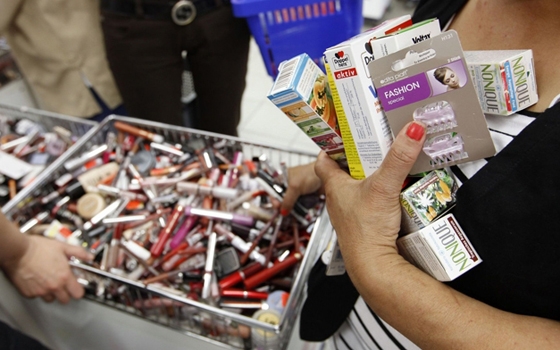Saudi Arabia's many affluent and beauty conscious women are spending on average SR14,256 ($3800) a year on cosmetics, which has seen many leading international companies setting up shop in the country. This is according to data released by Euromonitor, which publishes reports on industries, consumers and demographics in Saudi Arabia. With a population of 28.8 million and a growth rate of 1.9 percent, Saudi Arabia has the highest percentage, at 42 percent, of women in the Gulf Cooperation Council, Euromonitor has found.
With over 50,000 registered providers, the Kingdom's beauty industry is booming, driven by high disposable income, a young population, a high presence of international cosmetics brands and an ever-expanding retail landscape. The Kingdom's large and buoyant economy has been a key growth market and investment focus for brands and retailers. Over the past four years, Boots, the United Kingdom's leading pharmacy-led health and beauty retailer, and Bath & Body Works, America's retailer and fragrance provider, have entered the market, increasing their store portfolio to six and 15 locations respectively.
In 2012, L'Oreal solidified its presence by further expanding its product offering and introducing supplements for cosmetics purposes. One of its aims was to boost Saudization and employ more women, who are the key drivers of cosmetics growth in the Kingdom. More recently, in 2014, Marks & Spencer, UK's retail chain, unveiled two of its world-first lingerie and beauty stores, with plans to open a further eight in the Kingdom over the next two years.
The Saudi cosmetics market is the largest in the Middle East, estimated at over SR60 billion ($16 billion) annually, with a forecast of 11 percent annual growth rate, according to Euromonitor. "Over the next five years, the average annual gross domestic product (GDP) growth rate is expected to be 4.4 percent. By 2020, GDP per capita is forecast to reach SR112,500, up from SR71,250 in 2010," it stated. The International Monetary Fund has said that the Kingdom currently ranks as the 26th economy out of 189 in the "ease of doing business" category and an increasing number of beauty and cosmetics businesses are recognizing the potential for growth in the market.
Euromonitor has identified a marked shift in the attitudes of consumers, who have become increasingly sophisticated and demanding. An increase in the number of people having access to the Internet — 60.5 people out of 100 in 2013, up from 41 in 2010 — has led to an enhanced awareness of products and services. With cosmetic surgery on the rise, the sector has grown tenfold over the past five years. Since going under the knife for aesthetic reasons has become more socially acceptable, cosmetic procedures such as liposuction, rhinoplasty, Botox injections and fillers, and laser hair removal have become common.
Furthermore, the Kingdom is being increasingly viewed as an attractive shopping destination by religious tourists, with the country expecting to receive 88 million visitors by 2020. According to statistics, only 1 percent of operators in the Saudi beauty market travel outside the Kingdom to participate in international beauty shows and exhibitions in the region, so a local presence is necessary to gain exposure to this sector.
Arab News
7 November






















































